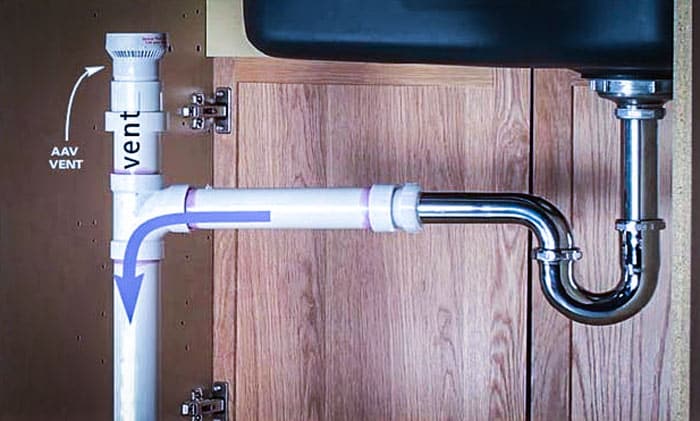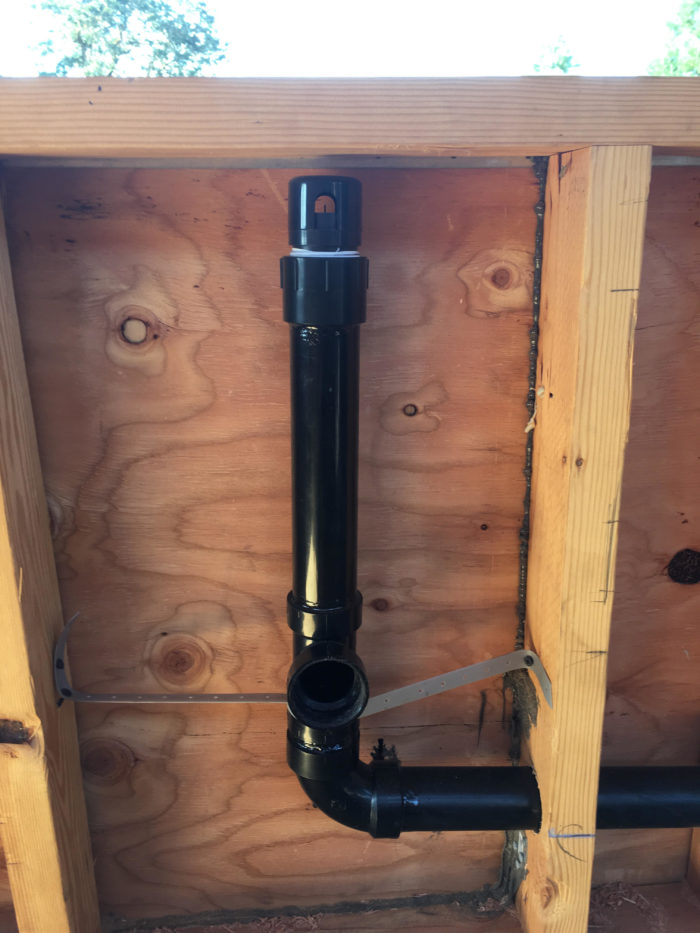Understanding The Importance of Proper Ventilation in Plumbing Systems
Understanding The Importance of Proper Ventilation in Plumbing Systems
Blog Article
We've come across this great article pertaining to Essential Plumbing Vent Pipes: Understanding Their Role listed below on the internet and decided it made perfect sense to quickly share it with you over here.

Correct air flow in pipes systems is commonly forgotten, yet it is crucial for keeping the functionality and security of your home's pipes. Air flow assists manage atmospheric pressure, protect against the build-up of damaging gases, and make sure the efficient elimination of waste. In this overview, we will discover the value of appropriate pipes ventilation, exactly how it functions, and the advantages it brings to your pipes system.
Recognizing Air Flow in Plumbing
Air flow in plumbing refers to the network of pipes that permit air to flow with the drain system. These vents serve several objectives, consisting of managing atmospheric pressure within the pipelines, protecting against sewage system gases from getting in the home, and helping in the smooth flow of wastewater.
Exactly How Ventilation Functions in Pipes Equipments
Air Pressure Regulation
Appropriate air flow maintains balanced air pressure within the plumbing system. When water flows through pipes, it displaces air. Without adequate air flow, this displacement can develop unfavorable pressure, bring about slow down drains or siphoning of water from catches, which can cause undesirable odors to leak right into the home.
Stopping Sewer Gas Accumulation
Among one of the most crucial functions of pipes vents is to avoid sewage system gases, such as methane and hydrogen sulfide, from accumulating within the home. These gases can present significant wellness threats and are very combustible. Vent pipes enable these gases to escape safely outdoors.
Helping in Waste Elimination
Ventilation helps in the efficient removal of wastewater by protecting against airlocks in the drainage system. When air can move easily with the vents, it allows water and waste to move smoothly via the pipes, reducing the threat of clogs and back-ups.
Kinds Of Pipes Vents
Key Stack Vent
The major pile vent, additionally known as the vent pile, is the main air vent in a plumbing system. It expands from the main drain line up via the roof covering, permitting gases to leave and fresh air to get in the system.
Branch Vent
Branch vents link to the main stack air vent and serve specific fixtures, such as sinks, commodes, and showers. These vents ensure that each component has adequate ventilation to operate correctly.
Air Admission Shutoff (AAV).
An Air Admittance Valve (AAV) is a one-way shutoff that permits air to enter the plumbing system without the requirement for a typical vent pipe extending through the roofing. AAVs are frequently used in remodellings or areas where setting up a standard vent is unwise.
Indications of Poor Air Flow in Plumbing.
Slow Draining Fixtures.
If your sinks, tubs, or commodes are draining pipes slowly, it could be an indication of poor air flow. Insufficient air flow can develop a vacuum cleaner effect, making it tough for water to drain pipes correctly.
Gurgling Sounds.
Gurgling sounds originating from drains pipes are frequently an outcome of air being sucked with water catches because of negative pressure in the pipes. This is a clear sign of inadequate ventilation.
Undesirable Odors.
Sewer odors inside your home are a red flag that your pipes system is not effectively ventilated. This can mean that sewage system gases are not being appropriately aired vent outside, resulting in possibly harmful conditions.
Common Air Flow Blunders.
Insufficient Vent Sizing.
Using small vent pipes can bring about poor air flow and pressure inequalities in the system. It's necessary to utilize vents that fulfill the specific requirements of your plumbing system.
Improper Vent Placement.
Placing vents as well much from the components they serve can lower their efficiency. Correct positioning ensures that air can flow freely and effectively through the system.
Ignoring Code Demands.
Building ordinance offer specific guidelines for plumbing ventilation. Overlooking these codes can lead to a system that stops working to operate properly and may cause costly repair work or health hazards.
Advantages of Appropriate Ventilation.
Enhanced System Efficiency.
Appropriately ventilated pipes systems operate extra effectively, with fewer blockages, faster draining pipes, and much less pressure on the pipes. This efficiency expands the life-span of the pipes system.
Improved Air Quality.
By protecting against sewage system gases from entering your home, proper air flow adds to far better indoor air top quality, making your living atmosphere healthier and more comfy.
Preventing Water Damages.
Ample air flow assists protect against water from being siphoned out of traps, which can lead to sewage system gases going into the home and triggering water damages over time.
Actions to Make Sure Proper Ventilation.
Consulting Plumbing Codes.
Always speak with neighborhood pipes codes when creating or customizing your pipes system. These codes give the needed standards for correct venting and guarantee your system fulfills security criteria.
Regular Assessment and Maintenance.
Regular assessments can aid recognize potential air flow issues prior to they end up being major troubles. Upkeep jobs, such as cleansing air vent pipes and checking for clogs, are crucial for maintaining the system in good working order.
Specialist Installation.
For brand-new installations or major alterations, it's a good idea to work with a professional plumbing. They have the expertise to make certain the ventilation system is appropriately designed and set up according to code.
Conclusion.
Correct ventilation is a crucial component of any plumbing system, making sure that it functions successfully and safely. By comprehending the relevance of air flow, acknowledging the signs of poor air flow, and taking actions to maintain your system, you can protect against expensive concerns and shield your home's air high quality.
4 Things You Should Know About Your Plumbing Vents
What Plumbing Vents Are
Also called a vent stack, a plumbing vent is a vertical pipe attached to your drain line that runs through your roof. The plumbing vent pipe, or plumbing air vent, removes gas and odors from your plumbing system and allows fresh air to enter the pipes, helping the water to flow out of the drain pipes.
What Plumbing Vents Do
Plumbing vents have two basic functions. One of which is to allow unpleasant smelling wastewater and sewer gasses to escape your plumbing system instead of entering your home. Plumbing vent pipes are typically located on roofs, away from windows, to ensure the fumes exit the home completely.
The other function of the plumbing vent is to move fresh air into your plumbing system. This helps move water through every plumbing fixture in your house, like toilets and sink drains. Think of the way in which you need to let a little air into the bottle as you pour soda in order to make the drink flow smoothly.
Different Types of Plumbing Vents
True vent: This is the most common vent option. In simplest terms, a true vent is a vertical pipe attached to your drain line that exits through the roof. They often function as the main vent that other fixtures can connect to. Re-vent pipe or auxiliary vent: Attached to the drain line near specific plumbing fixtures, re-vent pipes run up and over to connect to the main vent. Common vent: Two plumbing fixtures installed on opposite sides of a wall are typically tied into the vent stack using something known as a sanitary cross. Wet vent: This venting option operates as a drain pipe and a vent at the same time. Wet vent drainage systems drain water from one fixture while venting the air from another. Although they’ve been used for over 100 years, wet vent systems have only recently been added to the plumbing code in many areas. If you’re planning on installing one in a bathroom remodel, make sure you check your local code prior to construction. Loop vent: For free-standing fixtures like kitchen island sinks, loop vents are ideal. These vent pipes run under the floor, rise from the P-trap, and create a loop inside the cabinet sink. Air admittance valve: An AAV is a one-way mechanical valve typically installed at the site of the plumbing fixture. AAVs allow venting to occur without having to tie into a larger venting system. They’re ideal for venting fixtures where you aren’t able to easily connect to an existing vent system. Common Plumbing Vent Issues
Although vent pipes typically don’t have water flowing through them, they’re still subject to many typical plumbing issues. For example, clogs are one of the most common problems associated with sewer vent pipes. If your vent pipe gets clogged, all of your plumbing fixtures tied into the vent stack will be affected.
A sink with a slow drain that bubbles and gurgles or a strong sewage smell around your toilet are both indicators that your toilet vent pipe is clogged. Because most vent pipes exit through the roof, old leaves, twigs or even a bird’s nest could be clogging the pipe.
Clogs in your vent pipe system cause a buildup of negative pressure, meaning that water won’t be able to flow out of your home very well. It’s similar to putting your finger over the opening of a straw to trap water inside. When you remove your finger, the water is able to flow out of the straw.
If you suspect you have any blockage in your vent, make sure you have a professional come examine the situation. Left unchecked, a blocked air vent can lead to other costly repairs, like leaks and sediment buildup.
Under Pressure
Pipe vents are essential aspects of a home’s plumbing system. Owning a home means learning about all sorts of things you never put much thought into before. But by understanding as much as you can about the important systems of your home, you can keep those budgets intact and those anxiety levels low.
https://www.homeserve.com/en-us/blog/home-improvement/plumbing-vents/

Do you really like reading about ? Create feedback directly below. We will be pleased to know your suggestions about this posting. We hope that you come back again before long. Loved our article? Please quickly share it. Help somebody else locate it. Thank you so much for your time invested reading it.
Details Report this page